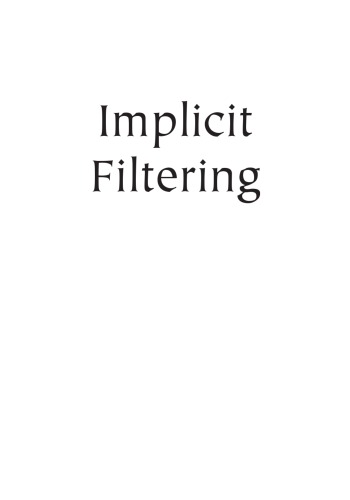

Most ebook files are in PDF format, so you can easily read them using various software such as Foxit Reader or directly on the Google Chrome browser.
Some ebook files are released by publishers in other formats such as .awz, .mobi, .epub, .fb2, etc. You may need to install specific software to read these formats on mobile/PC, such as Calibre.
Please read the tutorial at this link: https://ebookbell.com/faq
We offer FREE conversion to the popular formats you request; however, this may take some time. Therefore, right after payment, please email us, and we will try to provide the service as quickly as possible.
For some exceptional file formats or broken links (if any), please refrain from opening any disputes. Instead, email us first, and we will try to assist within a maximum of 6 hours.
EbookBell Team

5.0
18 reviewsThe author describes the algorithm, its convergence theory, and a new MATLAB implementation, and includes three case studies. This book is unique in that it is the only one in the area of derivative-free or sampling methods and is accompanied by publicly available software. It is also designed as a software manual and as a reference for implicit filtering - one can approach the book as a consumer of the software, as a student, or as a researcher in sampling and derivative-free methods. The book includes a chapter on convergence theory that is both accessible to students and an overview of recent results on optimization of noisy functions, including results that depend on non-smooth analysis and results on the handling of constraints.
Implicit filtering is used in applications in electrical, civil, and mechanical engineering.
Audience: This book is intended for students who want to learn about this technology, scientists and engineers who would like to apply the methods to real-world problems, and specialists who will use the ideas and the software from this book in their own research.
Contents: Preface; How to Get the Software; Chapter 1 Introduction; Chapter 2 Getting Started with imfil.m; Chapter 3 Notation and Preliminaries; Chapter 4 Implicit Filtering Algorithm; Chapter 5 Convergence Theory; Chapter 6 Using imfil.m; Chapter 7 Advanced Options; Chapter 8 Harmonic Oscillator; Chapter 9 Hydraulic Capture Problem; Chapter 10 Water Resources Policy; Bibliography; Index